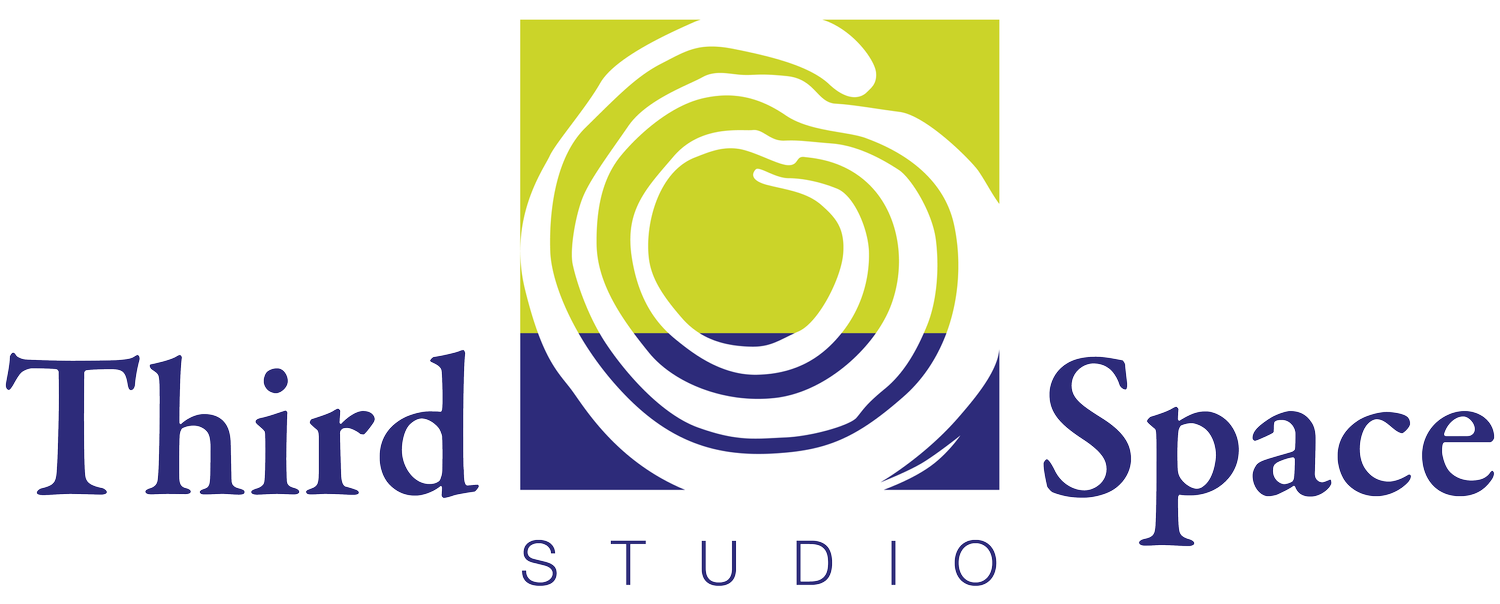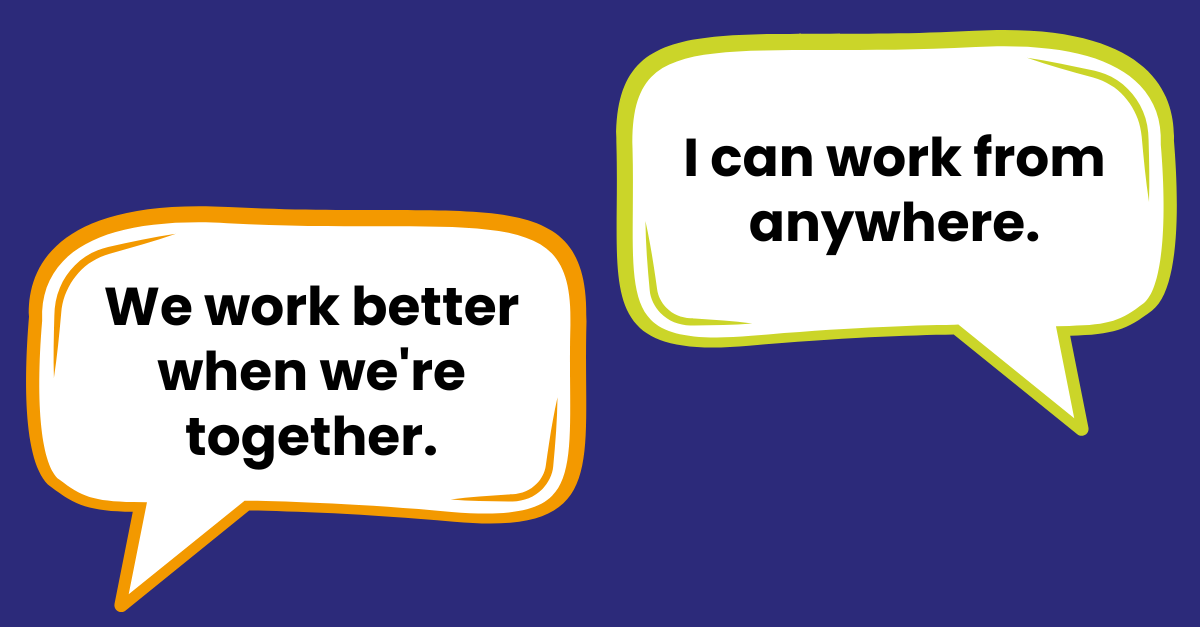How do you build a strong team?
Are we having the right conversation?
I've spoken with multiple executive directors in recent weeks who are antsy to return to in-person work. In pre-pandemic days, many of them practiced "management by walking around" - checking in with staff as they saw them in the halls. These executives miss the ways that ideas are more likely to bubble up organically during in-person conversations. These leaders also know that people are faster to innovate, quicker to see mistakes, and more likely to find the most effective solution to a problem when they work together as a team.
Knowing that teamwork matters, executive directors are focused on a return to the office to promote a better environment for collaboration. However, the pandemic gave staff a taste of the flexibility and focus available by working from home. Staff with the responsibility of caregiving for children or for elders find value in a flexible schedule and appreciate time gained by not commuting. Other staff who never felt psychologically safe at work value the mental and emotional space that they've gained. Staff who work in front of a computer wonder why they have to put on shoes and drive to the office only to focus on their screen.
In response to resistance from staff, many organizations are mandating a return to the office for at least a couple of days a week. Others are offering a range of incentives. But I don't think the conversation about mandates and incentives is the one we need to be having. I'm not even sure we need to focus on where we're working at all.
What we really want are strong, resilient teams meeting goals, re-prioritizing as needed, and effectively navigating uncertainties and new challenges.
We want staff who are connected to one another and aligned in their work to serve the organization's mission. We want to retain and grow the talent of our staff. We want to know where the challenges are and where our strengths lie. We want an organization that is consistently and successfully delivering on its mission with meaningful impact.
Creating this kind of team is not about where the team works, but about how the team works. It's about practices, not incentivizing or mandating where employees show up to do work. We need habits and mindsets that support teamwork regardless of whether the team is remote or in-person.
As I've observed multiple teams and done a bit of research, it seems to me that there are five categories that need attention when building a strong, resilient, capable team:
- Belonging
- Alignment
- Accountability
- Transparency
- Decision-making
I'm going to share the rationale and practical ideas for each category. Today we'll start with belonging, but we'll roll out the other categories in a series of newsletters between now and Labor Day. I look forward to hearing your feedback and ideas for practices to add.
Meredith
The US Women's National Soccer Team at the 2023 World Cup
Photo by Brad Smith/USSF/Getty Images for USSF
Megan Rapinoe, international soccer star, has been on more successful championship teams than most team players. On a recent podcast, she debunked the narrative that success is about sacrificing for the team. In her experience, the more people are able to be their full selves, the more they will give to the team, making the team better physically, emotionally, mentally, and competitively. When team members feel seen, they are more willing to step into the roles that the team needs. Team members who are seen and respected for who they are will make choices that support the team. Megan believes that successful teams have a ruthless commitment to each person's individuality and this commitment is what it means to belong within a team.
Megan's experience is backed by research. Several years ago, Google invested in a thorough research project called Project Aristotle to determine what makes a productive team. After looking at hundreds of characteristics, researchers at Google learned that in the best teams, members listen to one another and show sensitivity to feelings and needs. Not only do they listen, they share the space ensuring that everyone is able to contribute thoughts and ideas. Sharing space, listening, and being emotionally sensitive fosters a sense of psychological safety.
Amy Edmonson coined the term psychological safety almost 25 years ago and it's become an even more important concept as we build diverse, equitable, and inclusive organizations. Psychological safety is a shared belief that the team is a safe place for interpersonal risk-taking. It's what allows people to bring their whole selves to work, to voice unpopular opinions, and to suggest new solutions to persistent problems. People can work at their highest capacity knowing they'll be supported as they make mistakes and bumble.
Five Practices to Foster Belonging
Practices that support a sense of belonging within a team are a mix of habits and mindsets, all of which can be done in-person or when connecting online.
Be a vulnerable team leader. Share what makes you who you are as a person. Share the challenges and joys in your personal life. Role model what it means to be your authentic self.
Embrace discomfort. Too often we shutdown the perspective and ideas of others because the difference between what's being shared and our own values makes us uncomfortable. The individuals on a diverse team hold many different personal values. While we might have team values, we also need to welcome individual differences and be okay with leaning into uncomfortable spaces and conversations.
Be respectful of the non-work commitments of team members. Acknowledge and appreciate when a team member makes a choice on behalf of the team that has implications in other parts of their life.
Monitor the use of time in team conversations. Are some people talking more than others? Are some people unable to get a work in edgewise? You can ask someone on the team to record the number of times people speak and for how long and to share the data with the team.
Create opportunities for team members to regularly praise each other's work, provide honest feedback, and take corrective action. A regular use of Retrospectives is a great tool to support this practice.


